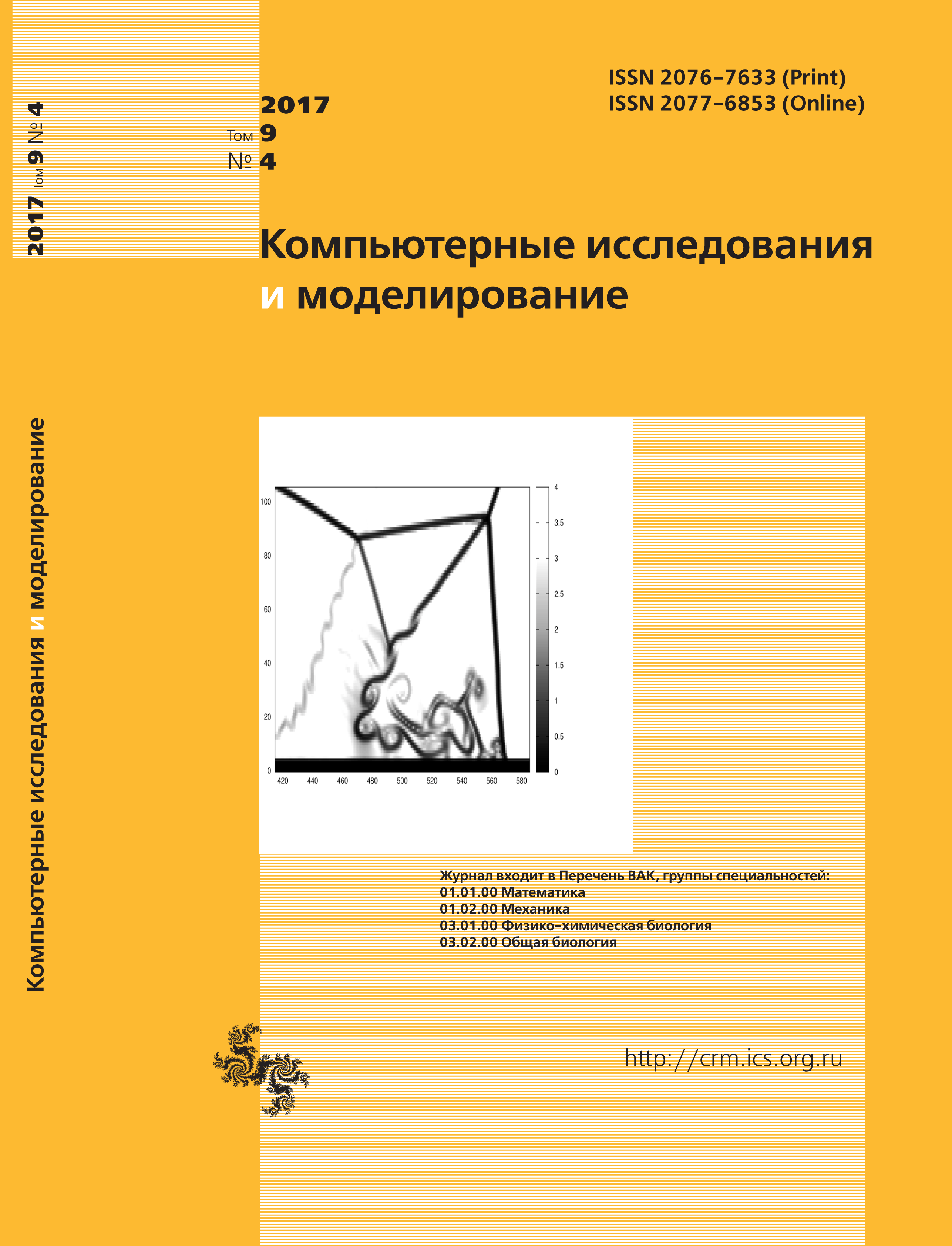All issues
- 2024 Vol. 16
- Issue 1 (special issue)
- 2023 Vol. 15
- 2022 Vol. 14
- 2021 Vol. 13
- 2020 Vol. 12
- 2019 Vol. 11
- 2018 Vol. 10
- 2017 Vol. 9
- 2016 Vol. 8
- 2015 Vol. 7
- 2014 Vol. 6
- 2013 Vol. 5
- 2012 Vol. 4
- 2011 Vol. 3
- 2010 Vol. 2
- 2009 Vol. 1
Comparative analysis of finite difference method and finite volume method for unsteady natural convection and thermal radiation in a cubical cavity filled with a diathermic medium
Comparative analysis of two numerical methods for simulation of unsteady natural convection and thermal surface radiation within a differentially heated cubical cavity has been carried out. The considered domain of interest had two isothermal opposite vertical faces, while other walls are adiabatic. The walls surfaces were diffuse and gray, namely, their directional spectral emissivity and absorptance do not depend on direction or wavelength but can depend on surface temperature. For the reflected radiation we had two approaches such as: 1) the reflected radiation is diffuse, namely, an intensity of the reflected radiation in any point of the surface is uniform for all directions; 2) the reflected radiation is uniform for each surface of the considered enclosure. Mathematical models formulated both in primitive variables “velocity–pressure” and in transformed variables “vector potential functions – vorticity vector” have been performed numerically using finite volume method and finite difference methods, respectively. It should be noted that radiative heat transfer has been analyzed using the net-radiation method in Poljak approach.
Using primitive variables and finite volume method for the considered boundary-value problem we applied power-law for an approximation of convective terms and central differences for an approximation of diffusive terms. The difference motion and energy equations have been solved using iterative method of alternating directions. Definition of the pressure field associated with velocity field has been performed using SIMPLE procedure.
Using transformed variables and finite difference method for the considered boundary-value problem we applied monotonic Samarsky scheme for convective terms and central differences for diffusive terms. Parabolic equations have been solved using locally one-dimensional Samarsky scheme. Discretization of elliptic equations for vector potential functions has been conducted using symmetric approximation of the second-order derivatives. Obtained difference equation has been solved by successive over-relaxation method. Optimal value of the relaxation parameter has been found on the basis of computational experiments.
As a result we have found the similar distributions of velocity and temperature in the case of these two approaches for different values of Rayleigh number, that illustrates an operability of the used techniques. The efficiency of transformed variables with finite difference method for unsteady problems has been shown.
Indexed in Scopus
Full-text version of the journal is also available on the web site of the scientific electronic library eLIBRARY.RU
The journal is included in the Russian Science Citation Index
The journal is included in the RSCI
International Interdisciplinary Conference "Mathematics. Computing. Education"







